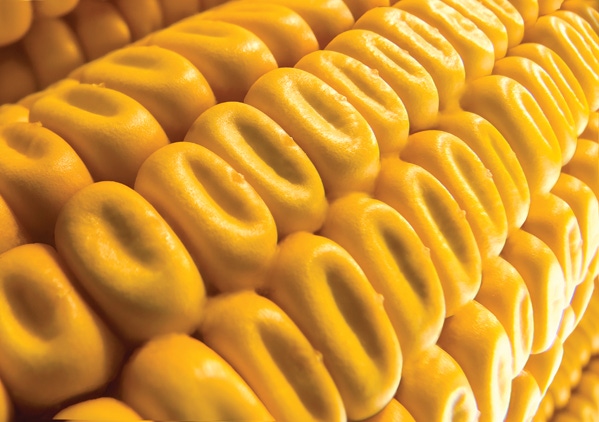March 17, 2011

In the 1960s, nearly 250 companies sold seed corn. That number grew to a high of 303 companies by 1996. During the next 14 years, the seed corn business changed and witnessed a precipitous drop in numbers; by last year, only 166 companies were left.
These numbers are a stark reminder of how the seed market has changed. But while the total number of seed companies has shrunk, experts say competition among the remaining seed brands is strong as each company — large and small — does battle for the gorwer’s seed dollar.
“Without a doubt there has been a tremendous evolution in the seed industry,” says Greg Ruehle, CEO of the Independent Professional Seedsmen Association (IPSA). “The consolidation we have seen in the seed segment is not unique to what we’ve seen in other parts of [agriculture].”
Reasons for the shrinking number of seed companies vary — acquisitions, partnerships, and business shuttering. “Will the trend of fewer seed companies continue? Probably,” notes Ben Kaehler, general manager, Dow AgroSciences seed affiliates. “Look at the automobile market…. It is a mature market and has seen its share of consolidation and brands go away.”
Andy LaVigne, president of the American Seed Trade Association (ASTA), says industry consolidation has slowed. “While we can’t predict whether there will be another wave of mergers, the current relationships are strong within the industry as each segment solidifies their marketing base,” he says.
National vs. local seed
Although there may be fewer players in the seed market, the market share of national vs. local/regional seed companies has remained somewhat stable. According to IPSA data, in 1965 the percentage of corn seed sold by national brands stood at 78%, with the remaining 22% of seed sold by local and regional seed companies. Flash forward to today and percentages are close to the same, with 81% from national brands and 19% sold by regional and local companies.
“There may be fewer local and regional companies, but their footprint in the corn market remains fairly consistent,” Ruehle says.
The soybean seed business has a different story. Local and regional presence for soybean seed shrunk from 48% in 2002 to just 29% in 2010. Although that decrease has been more pronounced than in the corn market, it still shows a strong presence for local brands.
“Regional companies have unique attributes to compete with a national brand,” Ruehle says. “These companies can focus on their local area, developing trait and genetic packages for the specific needs of their customers.”
Some local and regional seed companies carry strong brand identity. “Regional seed companies have good brand awareness around them,” reports Dow AgroSciences’ Kaehler. “Producers are familiar with the name, and we think there is a lot of value in keeping that brand name. Our seed affiliate companies will continue to keep their brand name and regional presence.”
The advantage for national companies, on the other hand, is that they can offer genetic and trait packages across a wider variety of seed offerings.
For Pioneer Hi-Bred, the company’s PROAccess has been very successful in allowing local management structure to remain for regional seed brands. At the same time, the regional companies have access to a larger library of traits and genetics.
“Our overall strategy has been around offering choices,” says Judd O’Connor, vice president, sales, Pioneer Hi-Bred. “We offer producers who want to work with a local company that option, while also offering producers the opportunity to work with a national company as well. The bottom line is serving customers with seed options.”
Independent opportunities
Today’s market provides plenty of opportunities for independent seed companies not affiliated with a major seed brand, according to Jeff Hartz, marketing manager, Wyffels Hybrids. “Some independents are able to offer a lot of the technologies that other seed companies can’t,” he says. “The key is that we’re not bound to only what a parent company sells or develops. We can offer many different technologies in genetic packages and can more objectively bring to market the hybrids that fit our customers’ needs the best.”
But it remains a tough marketplace. “For us to survive, we must be better than our larger competitors at developing innovative, advanced hybrids and bringing them to producers,” Hartz adds. “But we like our situation and are very optimistic that there are opportunities in this market.”
What is ahead?
Consolidation activity seems to have taken a respite for now. “It is difficult to predict if there will or won’t be any more consolidation in the market,” Pioneer’s O’Conner says. “But while there has been some significant consolidation, there still are a large number of seed companies out there.”
IPSA’s Ruehle adds, “Good, bad or otherwise, we’re likely to see more consolidation in the industry. I don’t see a huge wave like we did in the past, but there is likely to be some smart consolidation [for example, joint ventures, shared seed processing] as companies team up to create efficiencies.”
Competition among all seed companies will remain strong, even though there may be fewer seed reps knocking at your door. “Across the industry all brands and all companies sell good products,” Kaehler says. “It comes down to who the producer wants to buy from. Some choose national brands, some choose local brands. We try to offer both.”
The independent seed companies are staking their claim. “There’s a lot of divergence even among our membership on how they bring products to market,” Ruehle says. “For some, they have very aggressive breeding programs and are competing tooth and nail with the national brands. Yet a portion of our membership remains relationship-based and plans to keep it that way. And some use a combination of both.
“While the total number of planted acres changes from year to year, and we see some small shifts from national brands to regionals and back, it’s not all that substantial,” Ruehle continues. “The size of the pie has not changed, so these companies are working to get a bigger slice. The competition is phenomenal. At the end of the day, growers will benefit from a stronger product offering by all seed companies.”
In addition, higher commodity prices, evolving traits and new technologies in the seed industry have created a climate of optimism. “There is a strong relationship between the seed companies and their grower partners — large and small,” adds ASTA’s LaVigne. “From an industry standpoint, we are very upbeat and excited about the future.”
About the Author(s)
You May Also Like






